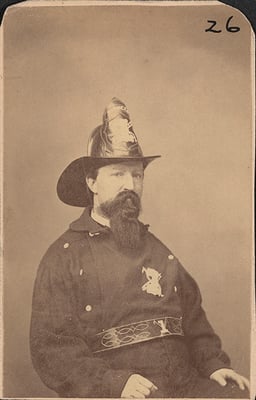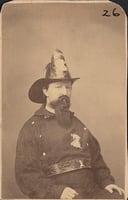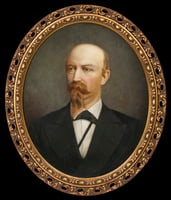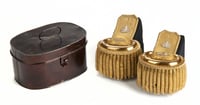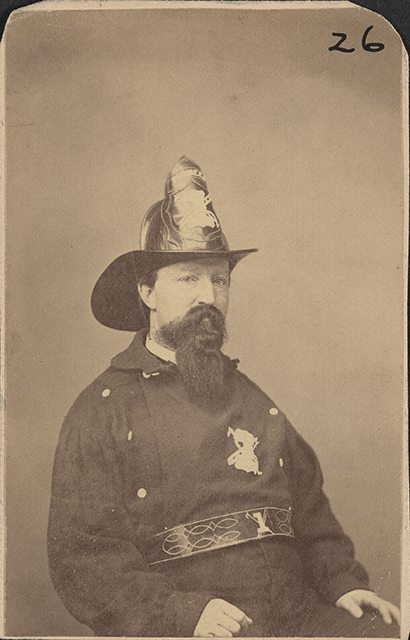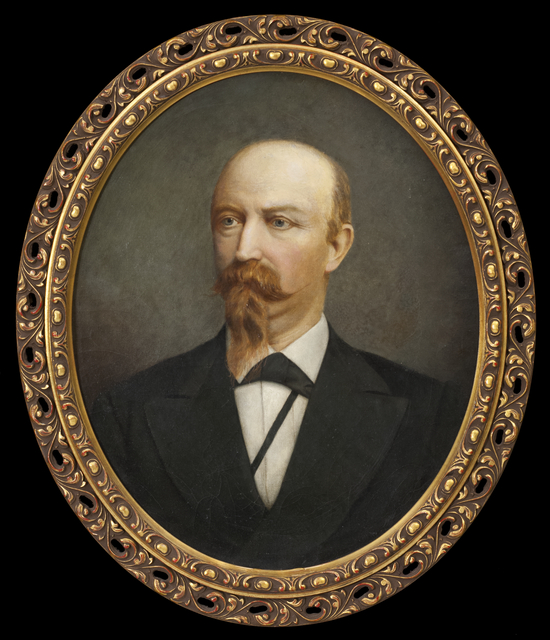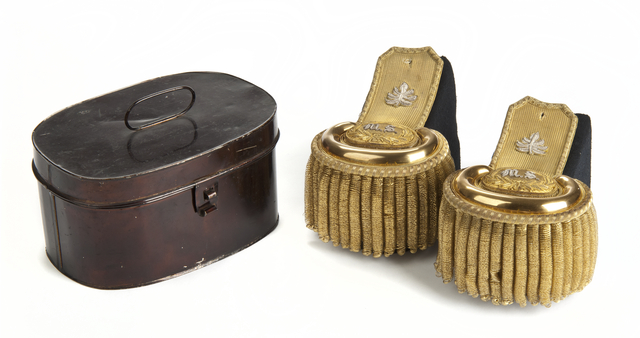Stewart, Jacob Henry (1829–1884)
Bibliography
Chaney, J. B. History of Acker Post #21, G. A. R. H. L. Collins, 1892.
https://babel.hathitrust.org/cgi/pt?id=wu.89077130565
“The First Minnesota.” St. Paul Dispatch, June 18, 1869.
“Horn House, 50 Irvine Park, Saint Paul.” Placeography.
https://www.placeography.net/Horn_House,_50_Irvine_Park,_Saint_Paul,_Minnesota
Imholte, John Quinn. The First Volunteers: History of the First Minnesota Volunteer Infantry Regiment. Ross & Haines, 1963.
https://babel.hathitrust.org/cgi/pt?id=wu.89062269808
“Memorial Windows to Be Consecrated at Snelling Chapel.” St. Paul Pioneer Press, August 4, 1928.
https://newspaperhub.mnhs.org/?a=d&d=sppp19280804.1.4
Newson, T. M. Pen Pictures of St Paul, Minnesota, and Biographical Sketches of Old Settlers, vol. 1. T. M. Newson, 1886.
https://archive.org/details/penpicturesofstp01news/page/n7/mode/2up
Stewart, Dr. Jacob. Military pension file, National Archives, Washington, DC.
“Stewart, Jacob Henry, 1829–1884.” Biographical Directory of the United States Congress.
https://bioguide.congress.gov/search/bio/S000908
“Stewart, Jacob Henry ‘J. H.’” Minnesota Legislators Past and Present. Minnesota Legislative Reference Library.
https://www.lrl.mn.gov/legdb/fulldetail?ID=14948
“United for Life.” St. Paul Globe, September 10, 1879.
https://www.mnhs.org/newspapers/lccn/sn83025287/1879-09-10/ed-1/seq-1
Upham, Warren, and Rose Barteu Dunlap, comps. “Stewart, Jacob Henry.” Collections of the Minnesota Historical Society XIV (June 1912), 744.
https://archive.org/details/collections14minnuoft/page/744/mode/2up
WPA Writers’ Program. The Mayors of St. Paul, 1850–1940, Including the First Three Town Presidents. Works Progress Administration, 1940.
https://babel.hathitrust.org/cgi/pt?id=uc1.b3635771
Chronology
1829
1851
1855
1856
1857
1858
1861
1861
1864
1865
1873
1875
1877
1879
1884
1928
Bibliography
Chaney, J. B. History of Acker Post #21, G. A. R. H. L. Collins, 1892.
https://babel.hathitrust.org/cgi/pt?id=wu.89077130565
“The First Minnesota.” St. Paul Dispatch, June 18, 1869.
“Horn House, 50 Irvine Park, Saint Paul.” Placeography.
https://www.placeography.net/Horn_House,_50_Irvine_Park,_Saint_Paul,_Minnesota
Imholte, John Quinn. The First Volunteers: History of the First Minnesota Volunteer Infantry Regiment. Ross & Haines, 1963.
https://babel.hathitrust.org/cgi/pt?id=wu.89062269808
“Memorial Windows to Be Consecrated at Snelling Chapel.” St. Paul Pioneer Press, August 4, 1928.
https://newspaperhub.mnhs.org/?a=d&d=sppp19280804.1.4
Newson, T. M. Pen Pictures of St Paul, Minnesota, and Biographical Sketches of Old Settlers, vol. 1. T. M. Newson, 1886.
https://archive.org/details/penpicturesofstp01news/page/n7/mode/2up
Stewart, Dr. Jacob. Military pension file, National Archives, Washington, DC.
“Stewart, Jacob Henry, 1829–1884.” Biographical Directory of the United States Congress.
https://bioguide.congress.gov/search/bio/S000908
“Stewart, Jacob Henry ‘J. H.’” Minnesota Legislators Past and Present. Minnesota Legislative Reference Library.
https://www.lrl.mn.gov/legdb/fulldetail?ID=14948
“United for Life.” St. Paul Globe, September 10, 1879.
https://www.mnhs.org/newspapers/lccn/sn83025287/1879-09-10/ed-1/seq-1
Upham, Warren, and Rose Barteu Dunlap, comps. “Stewart, Jacob Henry.” Collections of the Minnesota Historical Society XIV (June 1912), 744.
https://archive.org/details/collections14minnuoft/page/744/mode/2up
WPA Writers’ Program. The Mayors of St. Paul, 1850–1940, Including the First Three Town Presidents. Works Progress Administration, 1940.
https://babel.hathitrust.org/cgi/pt?id=uc1.b3635771

